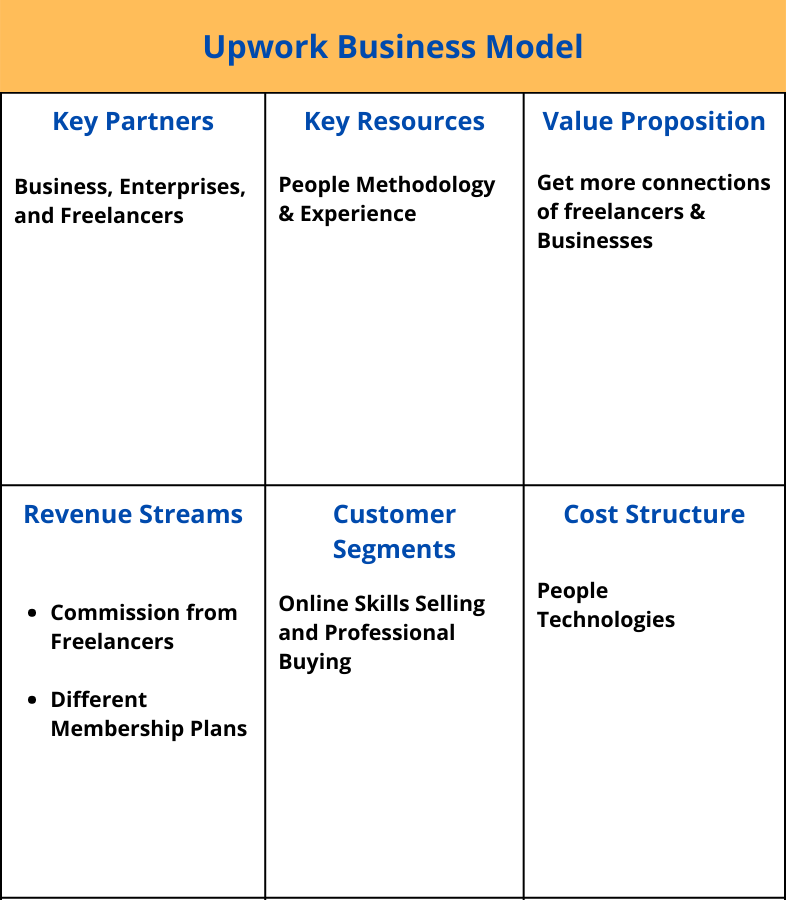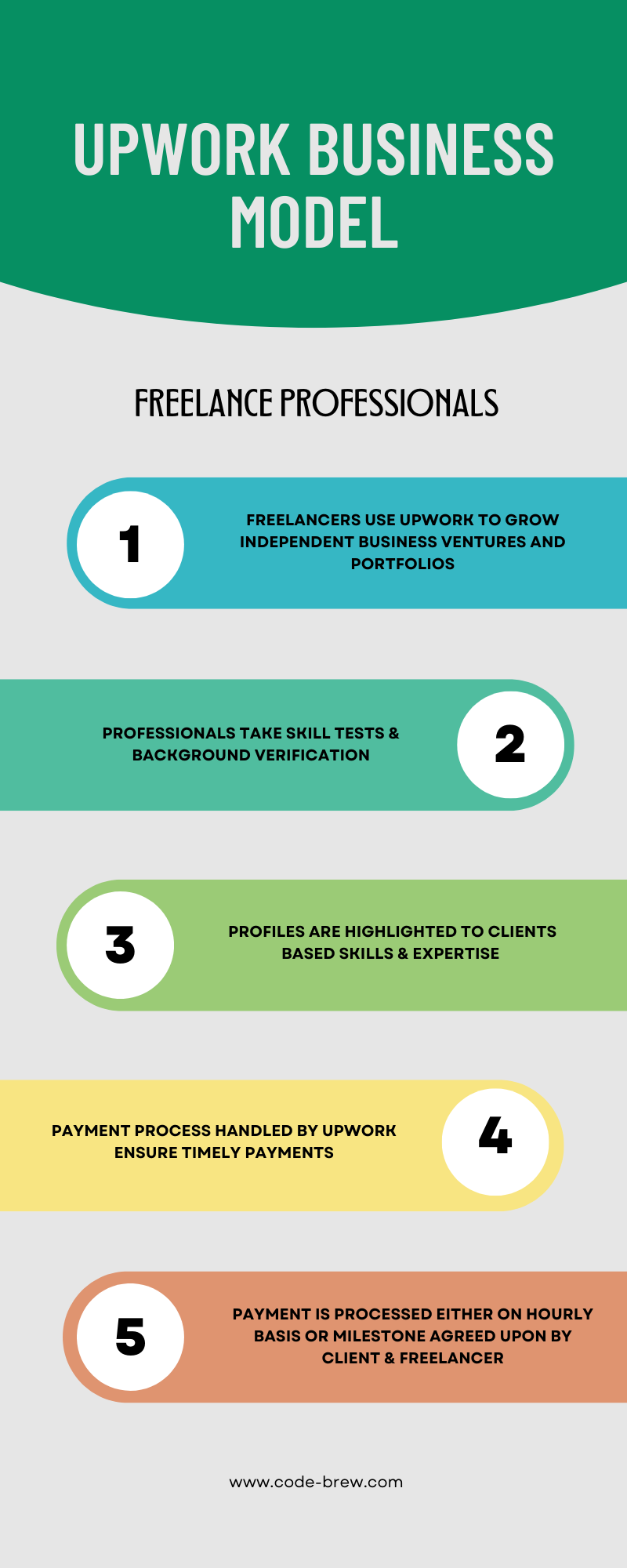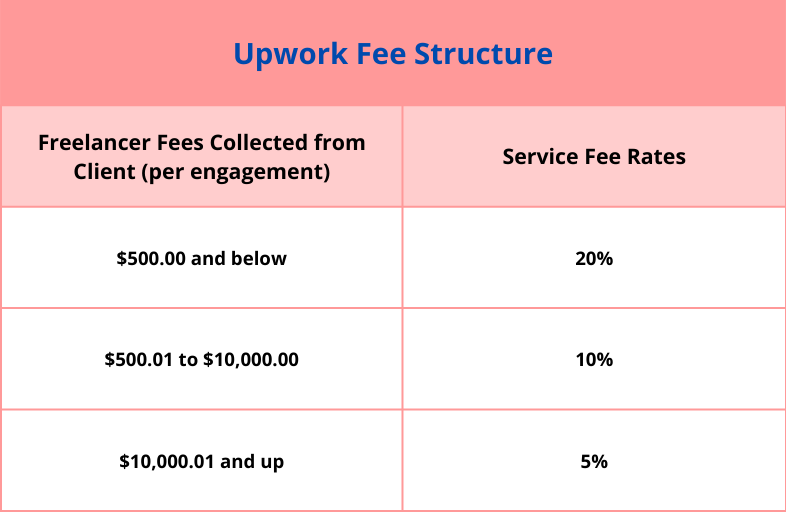
Upwork business model is the flag bearer of the right approach to leading an online talent marketplace. And why wouldn’t it?
Table of Contents
From $164.45 million worldwide revenue generated in 2016 to $502.8 million in 2021, Upwork has come a long way since the merger of Elance and oDesk in 2015. This is a result of a digital trend of people working on their terms & preferences. A trend that allows people to choose,
With more independent talents attracting successful organizations due to their cost-effective and flexible solutions, you might want to learn more about this leading freelancing platform. Here’s a detailed analysis of Upwork’s business & revenue model.
The ideation behind Upwork’s inception is simple – getting the work done and expanding a business without hiring an individual for business premises. Here are the key components of the Upwork business model canvas.

Upwork platform is divided into two segments – companies and freelancers.
Here’s how Upwork works with both of these clients.
Here’s how the process goes.

This is how the process goes.

It all starts with clients posting a job description on the Upwork portal.
If it’s an hourly-based project, Upwork tracks freelancers’ work using data points like the hours they put in to complete the tasks. In addition, Upwork discourages users from negotiating outside of the Upwork platform. This protects freelancers from clients’ refusal to pay them for the work done.
There are a couple of downsides to the Upwork platform.
The Upwork business framework makes new freelancers bid as low as possible to win a project. This often leads to the client getting substandard work from freelancers. Hence, the platform allows businesses to reject the payment to freelancers if the desired quality of work is not met.
Upwork’s revenue model is based on all the services offered by freelancers to their clients. The services range from software development, graphic design, copywriting, accounting, and administration to web development, project management, photography, social media marketing, virtual personal assistance, and the list goes on.

23% of Employee Pay = 13% payrolling costs + 10% Upwork fee
Multiple factors come into play for Upwork’s successful run over the years. But what’s remarkable is that Upwork has managed to stand out from other freelance platforms even when the marketplace has been subjected to a highly competitive and rapidly growing environment.
Technology is changing, business needs are shifting – products and services, and new competitors & freelancers are joining the freelance marketplace. Here are a few aspects that Upwork is covering better than the rest.
Here are a couple of valuable features that enable both freelancers and clients to run their businesses hassle-free.
Here are some of Upwork’s key competitors in the online job marketplace.
Whether it’s the rise of Covid-19 or the onset of the digital age, there has never been this huge drive for remote working as today. Today, many top organizations are outsourcing & digitizing their work over online platforms and preferring remote working as their primary or alternative work options.
So, what does this indicates?
It indicates the high probability of successive growth in the online freelance marketplace in the coming times. Hence, the business model of a talent marketplace like Upwork can work wonders in helping similar businesses follow the path to success over time.
Now, if you have an idea for an online talent marketplace and want to turn that idea into reality, Code Brew is here to help! Discover all the digital possibilities for your brand with our comprehensive suite of app development services.
Contact us today to get a free demo!
